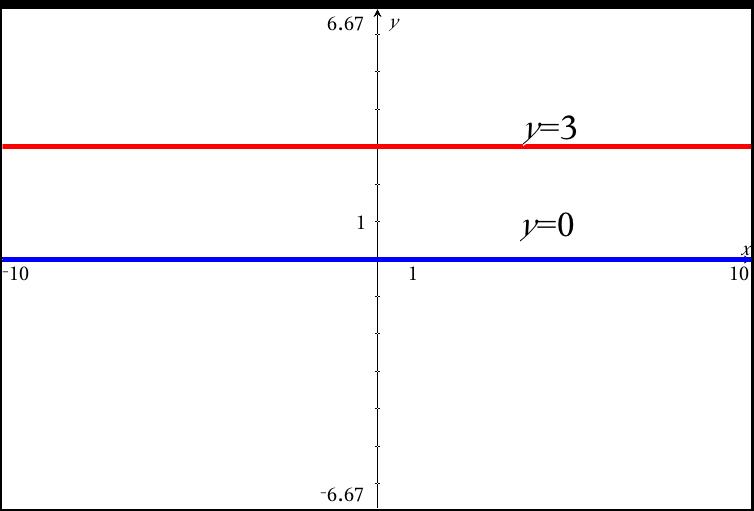Horizontal and Vertical Line Graphs
Key Questions
-
A horizontal has the equation
#y=b# with#b# any constant number
A vertical has the equation#x=c# with#c# any constant numberA normal linear equation is mostly of the form
#y=mx+b#
where#m# is the slope. In a horizontal graph, the slope is 0.
The#b# (called the#y# -intercept) tells you where the graph crosses the#y# -axis.For the vertical graph a similar story goes and
#c# is called the#x# -intercept. -
Answer:
#x=0# Explanation:
For any point on the Y-axis,
#x# is equal to zero;
furthermore, if any point for which the#x# -coordinate is equal to zero will be on the Y-axis. -
The x-axis is like a number line, isn't it? Every point on the x-axis has a y-coordinate of 0 like this: (-4,0), (3,0), (2.7, 0) and (0,0).
If all of these points have the same y-coordinate, it follows that the equation of that line must be y = 0! It would be the same idea for any horizontal line, since the slope = 0. Calculate the slope between any two of those points:
m =#(0-0)/(3-(-4))# using (-4,0) and (3,0).
You would write the equation now like: y = 0x + 0, or just y = 0.Think about another horizontal line that goes through the points (8,3), (0,3), (-14, 3), and (4.1, 3). Calculate the slope:
m =
#(3-3)/(-14-0)# using the points (0,3) and (-14,3).
The y-intercept is (0,3) and therefore the equation of that line is y = 0x + 3, or just y = 3.
-
An equation of a vertical line can be written in the form
#x=a# ,where
#a# is a constant.An equation of a horizontal line can be written in the form
#y=b# ,where
#b# is a constant.
I hope that this was helpful.
Questions
Graphs of Linear Equations and Functions
-
Graphs in the Coordinate Plane
-
Graphs of Linear Equations
-
Horizontal and Vertical Line Graphs
-
Applications of Linear Graphs
-
Intercepts by Substitution
-
Intercepts and the Cover-Up Method
-
Slope
-
Rates of Change
-
Slope-Intercept Form
-
Graphs Using Slope-Intercept Form
-
Direct Variation
-
Applications Using Direct Variation
-
Function Notation and Linear Functions
-
Graphs of Linear Functions
-
Problem Solving with Linear Graphs